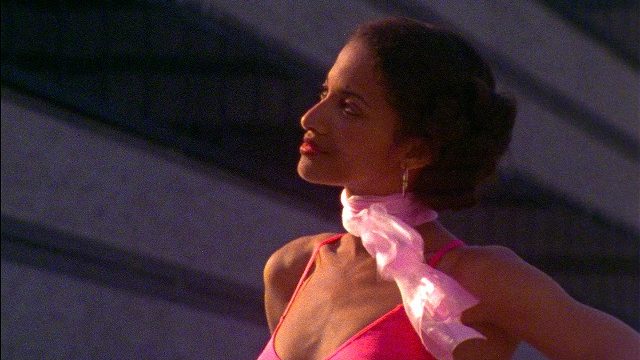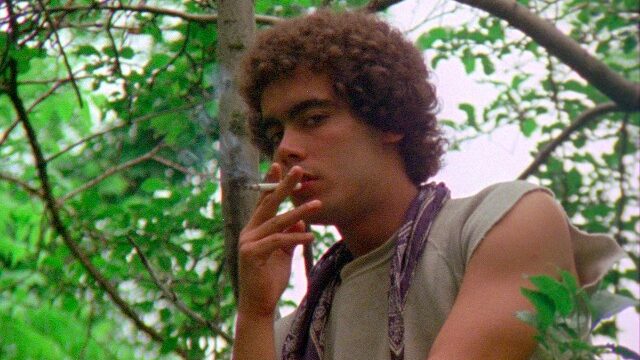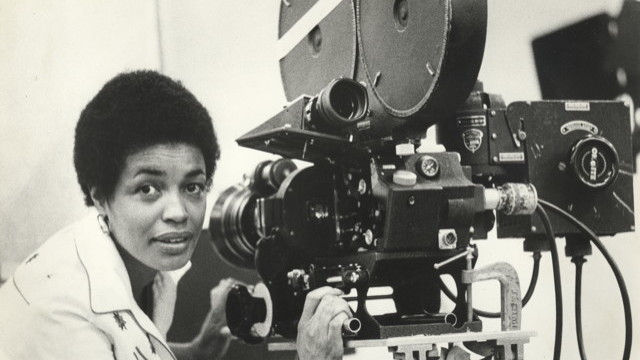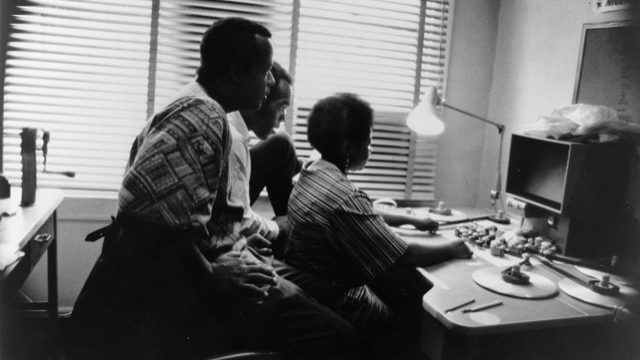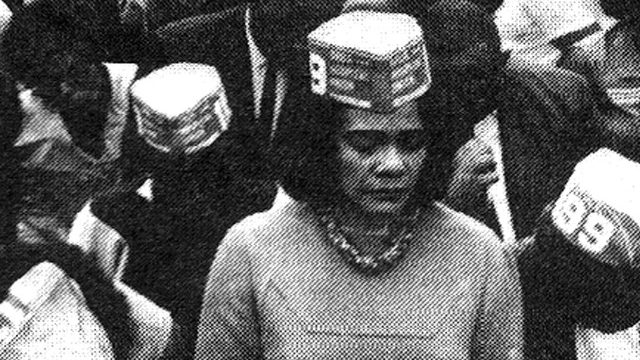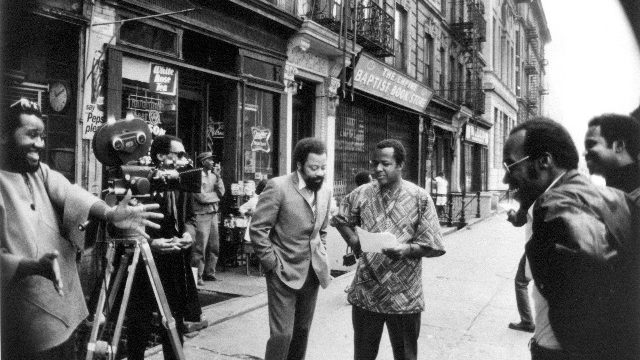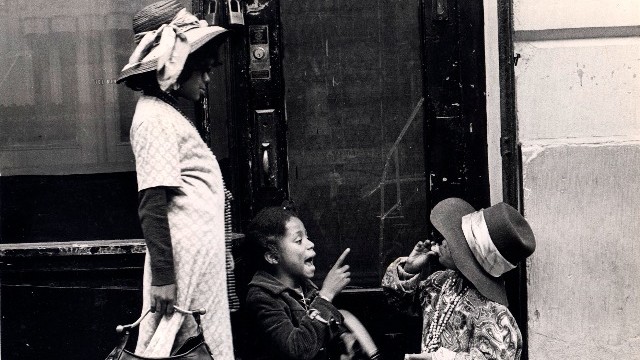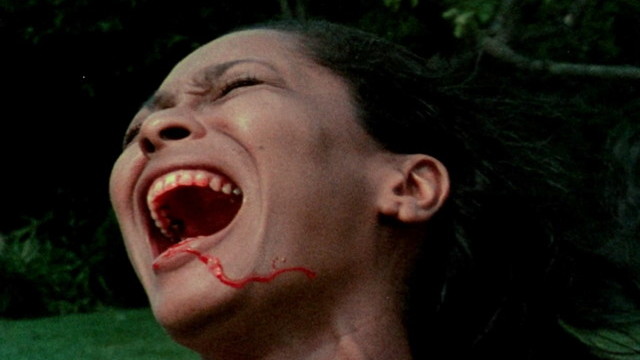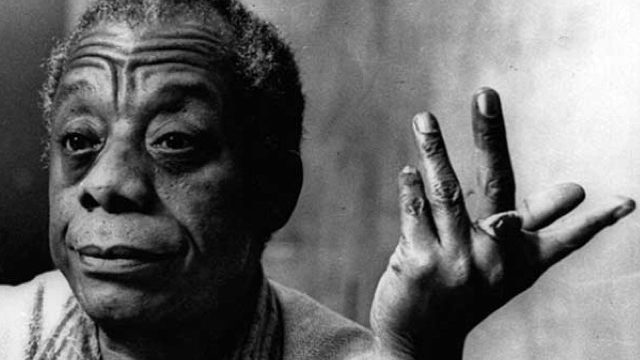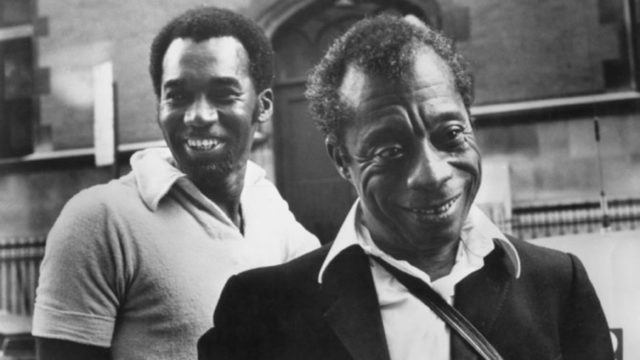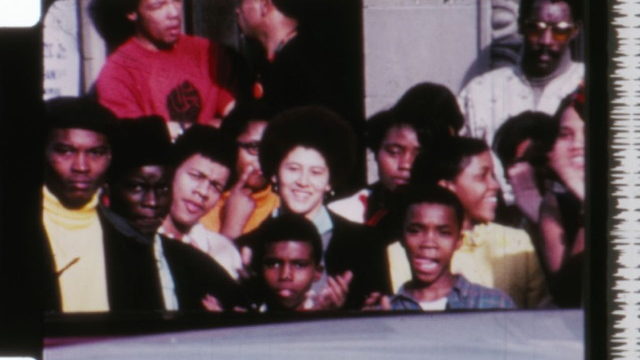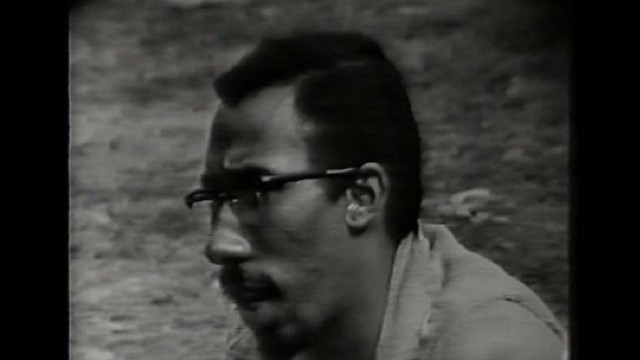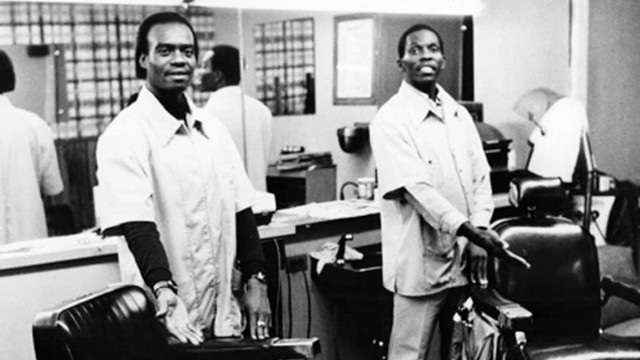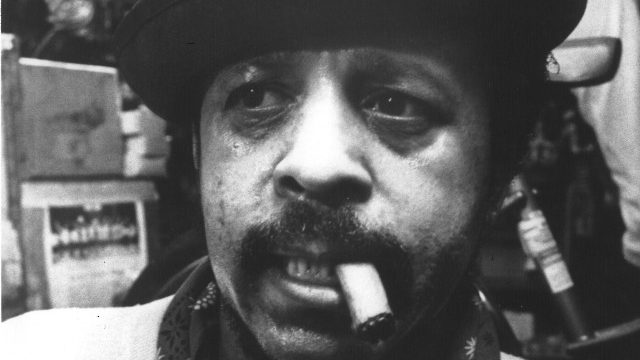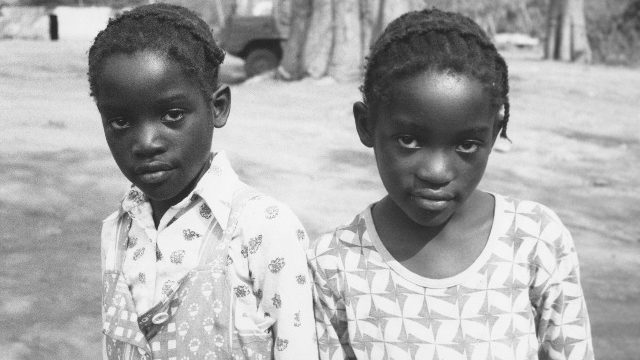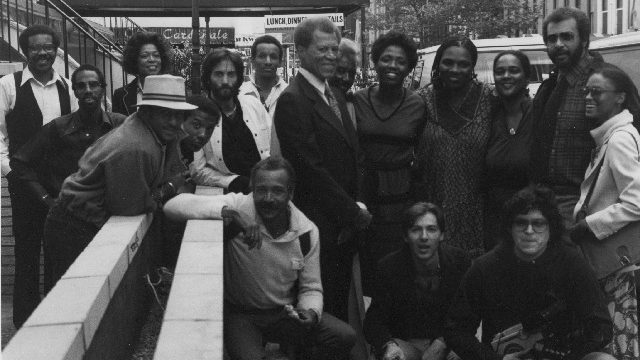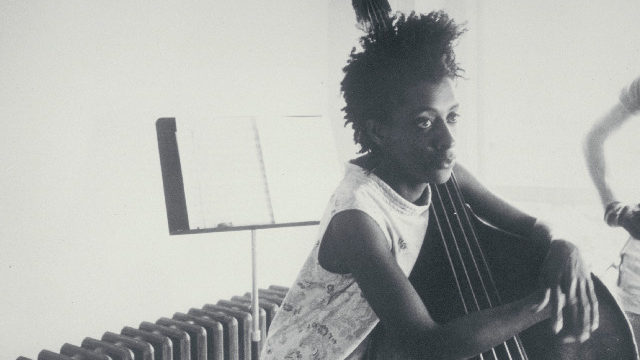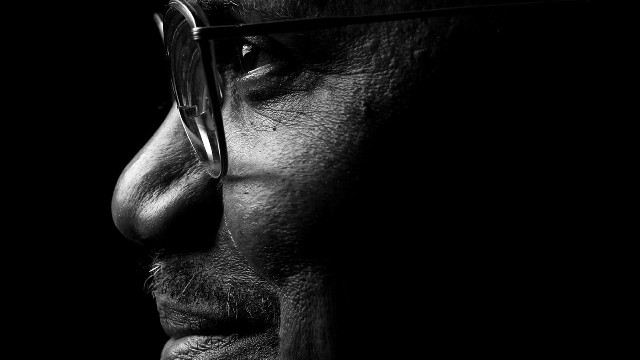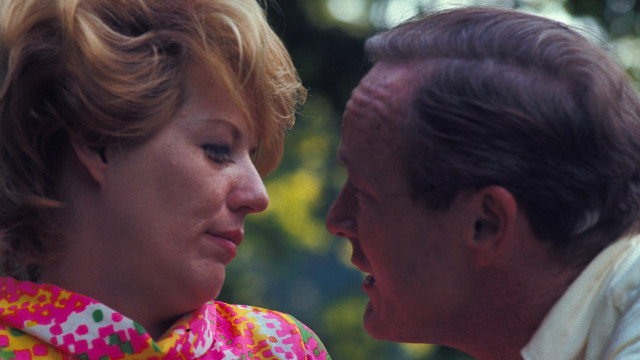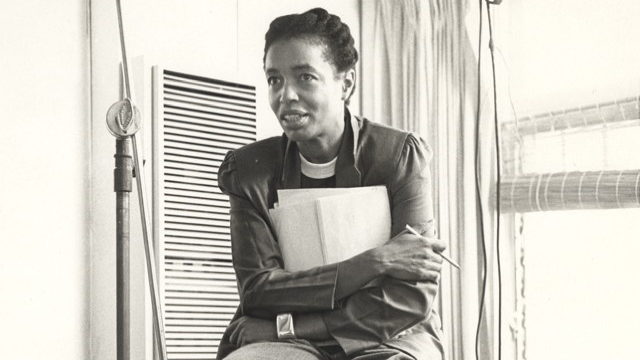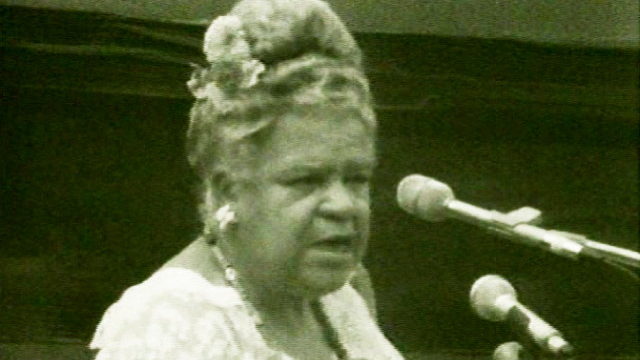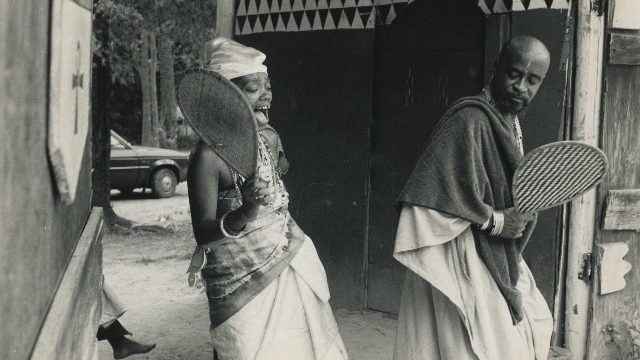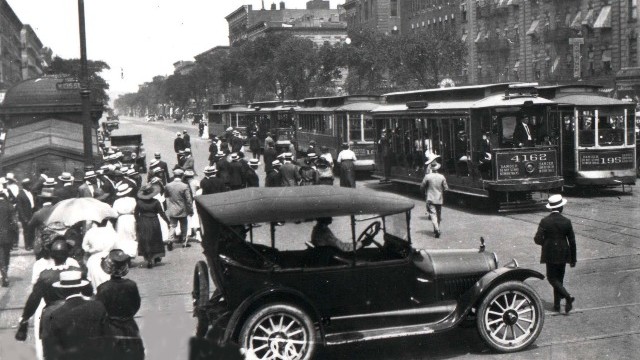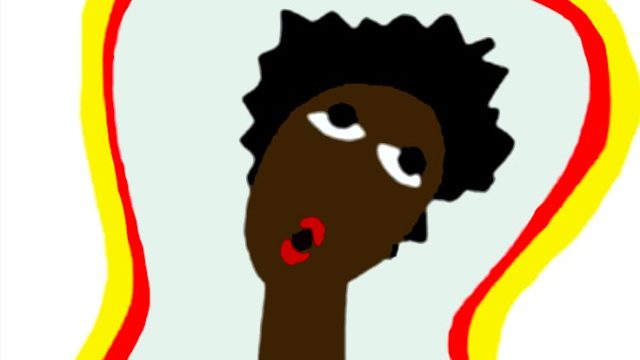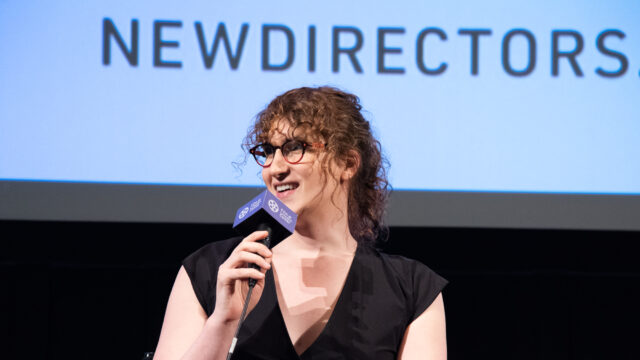Tell It Like It Is: Black Independents in New York, 1968 – 1986
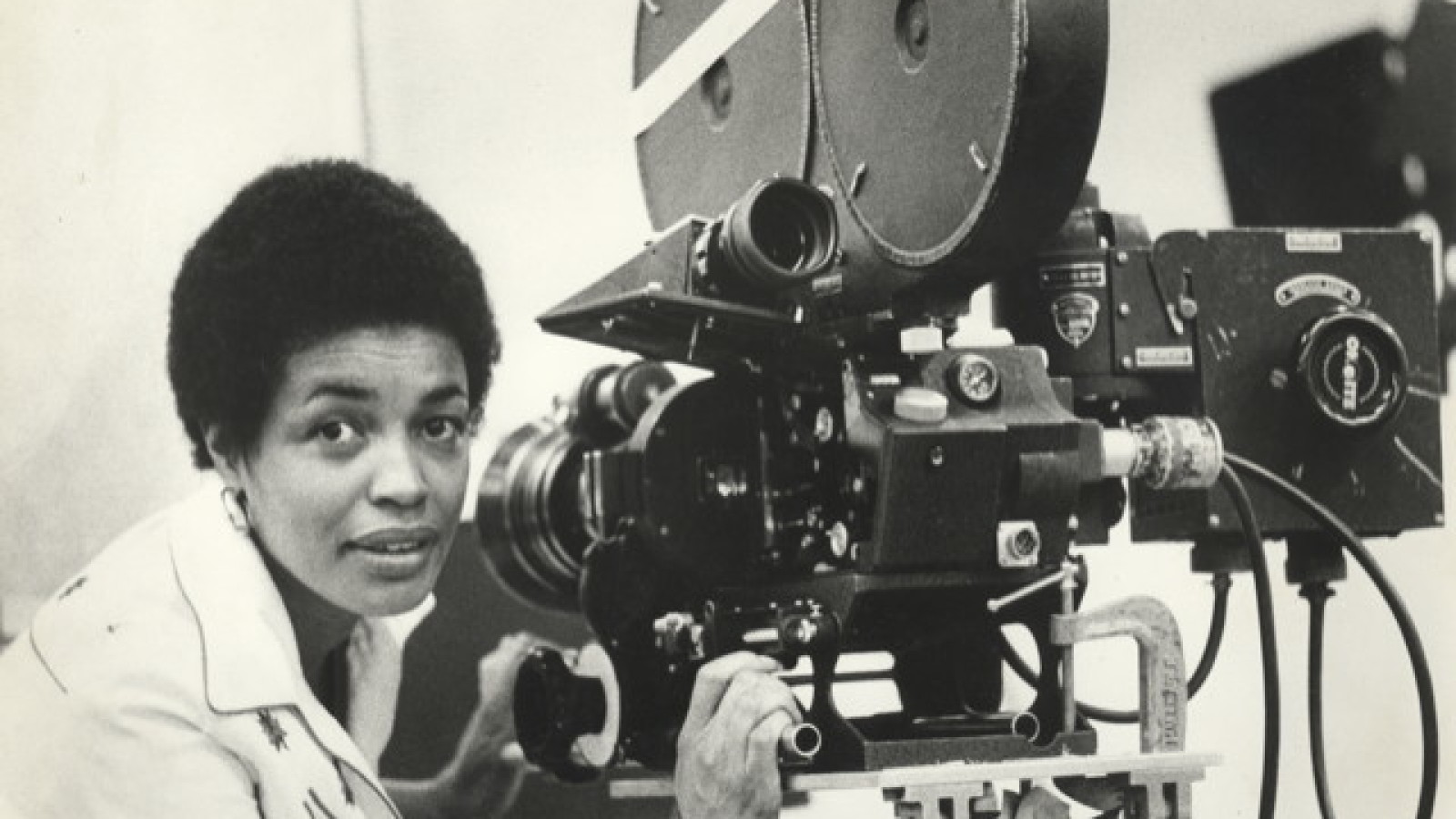
February 6 – 19
In early 1968, William Greaves began shooting in Central Park, and the resulting film, Symbiopsychotaxiplasm: Take One, came to be considered one of the major works of American independent cinema. Later that year, following a staff strike, WNET’s newly created program, Black Journal (with Greaves as Executive Producer) was established “under black editorial control” and as home base for a new generation of filmmakers redefining documentary. 1968 also marked the production of the first Hollywood studio film directed by an African American, Gordon Park’s The Learning Tree. Shortly thereafter, actor/playwright/ screenwriter/novelist Bill Gunn directed the studio-backed Stop, which remains unreleased by Warner Bros. to this day; Gunn, rejected by the industry that had courted him, then directed the independent classic Ganja and Hess, ushering in a new type of horror film—which Ishmael Reed called “what might be the country’s most intellectual and sophisticated horror films.”
This survey is comprised of key films produced between 1968 and 1986, when Spike Lee’s first feature, the independently produced She’s Gotta Have It, was released theatrically—and followed by a new era of studio filmmaking by black directors. Representing highlights of New York–based independents, activists all—producing these films in a time when minority film production was not supported and frequently suppressed—this program is full of major works by some of the great filmmakers of this (or any) era in American film history.
Programmed by Jake Perlin and Michelle Materre, co-presented by Creatively Speaking. In association with the Mayor's Office of Media & Entertainment. Media sponsor: Amsterdam News.
For sale at the Film Society in conjunction with this series: Bill Gunn’s Rhinestone Sharecropping (a novel) and Black Picture Show (a play), published by I Reed Press, and How to Become a Union Camerawoman by Jessie Maple, published by LJ Film Productions.
See more for less with a 3+ Film Package or a $99 All Access Pass!
American Dreamer, The (1972)
American Dreamer, The (1972) (1971) | Pers: Dennis Hopper | Dir: Carson,L.M.Kit/Schiller,L | Ref: AME043AB | Photo Credit: [ The Kobal Collection / Corda Prods ] | Editorial use only related to cinema, television and personalities. Not for cover use,…
Losing Ground
Extended due to popular demand!
Finally receiving a long overdue theatrical run, Losing Ground is one of the first feature films written and directed by a black woman and a groundbreaking romance exploring women’s sexuality, modern marriage, and the life of artists and scholars.
The Cruz Brothers and Miss Malloy
Opening Night
Introduction by Nina Collins on February 6
Rockland County serves as the setting for Kathleen Collins’s first film, about three young Puerto Rican men whose lives are watched over by their father’s ghost and Miss Malloy, an elderly widow whose house needs some tender loving care.
An Evening with Jessie Maple
Q&A with Jessie Maple and Leroy Patton
An evening with trailblazer and pioneer Jessie Maple, the first African-American woman to gain entry in New York’s camera operators union. This program will include her feature debut, Will, the story of a basketball coach fighting demons and dealing with modern urban life.
Will (Jessie Maple, 1981, 70m)
An Evening with Kent Garrett
Q&A with Kent Garrett and Kazembe Balagun of Rosa Luxemburg Shiftung, New York
Two docs made for Black Journal examining the perennial outsider status accorded to those ostensibly on the inside—policemen in Central Harlem and Los Angeles and African-American soldiers in Vietnam.
The Black GI (Kent Garrett, 1971, 54m)
The Black Cop (Kent Garrett, 1969, 15m)
An Evening with Madeline Anderson
Q&A with Madeline Anderson
This program features Madeline Anderson’s classic I Am Somebody, which depicts the strength of a striking group of African-American women in Charleston, South Carolina, as well as her first documentary and work from Black Journal.
I Am Somebody (Madeline Anderson, 1970, 30m)
Integration Report #1 (Madeline Anderson, 1960, 20m)
A Tribute to Malcolm X (Madeline Anderson, 1967, 14m)
Black Journal Program
Q&A with Charles Hobson, Louise Greaves, Kent Garrett, Madeline Anderson, and Lou Potter moderated by Mable Haddock, founding President and CEO of the National Black Programming Consortium (NBPC)
The first nationally broadcast black newsmagazine, produced by William Greaves and Lou Potter and hosted by Wali Saddiq and Greaves, was home to a who’s-who of producers, directors, editors, and cinematographers working in a diversity of styles with unrivaled creativity and experimentation.
A Dream Is What You Wake Up From
Q&A with filmmaker JT Takagi of Third World Newsreel, archivist Elena Rossi-Snook of the NYPL for the Performing Arts, and curator Clairesa Clay
Three black families, observed in their daily lives, their thoughts, values, and aspirations expressed on the soundtrack, as well as their different approaches to the struggle for survival in contemporary society.
Screening with Black Faces (Young Filmmakers Foundation, 1970, 16mm, 1m)
Ganja and Hess
Post-screening discussion with film scholar, filmmaker and distributor/preservationist Pearl Bowser; producer Chiz Schultz; and composer Sam Waymon on February 7
Introduction by Spike Lee on February 8
Recut for its U.S. release, Ganja and Hess, was first made available years later in its intended version by independent distributor Pearl Bowser, and, now restored, is considered a classic. Conceived as a vampire tale, Gunn’s film is a formally radical and deeply philosophical inquiry into passion and history.
I Heard It Through the Grapevine + James Baldwin from Another Place
Intro by Pat Hartley & Sedat Pakay
I Heard It Through the Grapevine, in which James Baldwin retraces his time in the South during the Civil Rights Movement, is paired with the short James Baldwin from Another Place (Sedat Pakay, 13m), which finds Baldwin in Istanbul musing about race, the American fascination with sexuality, insights into his interrupted writing decade in the country, and more.
I Remember Harlem
Q&A with producer Dr. Juanita R. Howard and Director of Photography Richard Adams
Baldwin is interviewed for William Miles’s landmark epic documenting the early settlement of the Village of Harlem in the 17th century, to the specter of urban renewal and redevelopment in the 1970s. The film chronicles the centuries of change and political and artistic expression that has made this complex hamlet the capital of urban America.
In Motion: Amiri Baraka
Q&A with ImageNation Cinema Foundation founder Moikgantsi Ngama, writer/activist Kevin Powell, and Nicole Franklin & Kathe Sandler of The Black Documentary Collective
This video portrait shows the sage revolutionary at readings, on his radio show, at home, and appealing a punitive court ruling.
Screening with The New-Ark (Amiri Baraka, 1968, 25m) and a performance by Young Spirit House Movers from Inside Bedford-Stuyvesant (1968, 10m)
Inside Bedford-Stuyvesant Program
Q&A with Charles Hobson moderated by Devorah Heitner, author of Black Power TV. Heitner and Hobson will participate in a book signing directly following in the Frieda & Roy Furman Gallery.
A selection of episodes, presented by producer Charles Hobson, of what is considered the first African American–produced television series, originally conceived to counter images of black neighborhoods in the mainstream news.
Joe’s Bed-Stuy Barbershop: We Cut Heads
Q&A with filmmaker Charles Lane and author, filmmaker, and critic Nelson George
Spike Lee’s NYU Masters program thesis (and the first student feature film ever selected for New Directors/New Films) is a precocious work from a major artist, irrefutable evidence that its maker would go on to become one of the greats.
Screening with A Place in Time (Charles Lane, 1977, 34m)
The Long Night
Q&A with Woodie King, Jr.
One night in the life of a young boy on the street, encountering the denizens of mid-1970s Harlem and commenting on the life of an American family.
Namibia: Independence Now!
Q&A with Pearl Bowser, Christine Choy, Al Santana, and JT Takagi
Depicting the significant role of women in the Namibian struggle for independence, this film explores the lives of exiled women workers attempting to free their country from illegal exploitation.
One Last Look
Q&A with Charles Hobson
This rare film of Steve Carter’s play, featuring many of the leading actors of the era before they went on to achieve international fame, is an emotionally charged drama of family, friends, and former lovers confronting the ghost of the family patriarch at his funeral.
Personal Problems
Cast and crew reunion and Q&A with Ishmael Reed, composer Carman Moore, producer Steve Cannon, Dr. Vertamae Smart-Grosvenor, and Sam Waymon on February 7
“What happens when a group of unbankable individuals tell their stories? Actors who have final say over their speaking parts?” These questions by writer Ishmael Reed lead to the conception of this “meta soap opera,” the story of a Harlem couple, and their friends, made without “the middleman.”
She’s Gotta Have It
Q&A with filmmaker and professor Marcus Turner
The one that changed the entire landscape of independent film and announced a genuine director-as-superstar, possessing an undeniable confidence, vision, and grandeur of style.
St. Clair Bourne Program
Q&A with film scholar Pearl Bowser, filmmaker Crystal Emery, filmmaker Sam Pollard, and Rafee Kamal of The Black Documentary Collective
Producing or directing more than 40 films in a 36-year career, St. Clair Bourne is inarguably the most prolific black documentarian of his time, authentically documenting critical aspects of the black community—its culture, resistance, and activism.
The Black and the Green (St. Clair Bourne, 1983, 45m)
Something to Build On (St. Clair Bourne, 1971, 29m)
Statues Hardly Ever Smile (Stan Lathan, 1971, 21m)
Symbiopsychotaxiplasm: Take One
Q&A with Louise Greaves and special guests, moderated by film journalist Eric Hynes
Process, form, and personality collide in Greaves’s classic docufiction/film about making a film/narrative experiment/New York time capsule, about which no superlatives can be overused and whose influence cannot be overstated.
Twice As Nice
Introduction by Jessie Maple
Maple’s second narrative feature uses an intimate story—the relationship of twin college basketball players—to examine the nature of sisterhood, competition, and friendship.
Video Program
Free Event
Post-screening discussion with Rebecca Cleman and Chris Hill
A program of video-based works that used television technology to bring public attention to Black American identity, through intervention, documentation, and parody.
Queen Mother Moore Speech at Greenhaven Prison (People’s Communications Network, 1973, 17m)
About Media (Anthony Ramos, 1977, 25m)
Free, White, and 21 (Howardena Pindell, 1980, 12m)
Voices of the Gods + Let the Church Say Amen!
Q&A with filmmaker Al Santana and Eric V. Tait of The Black Documentary Collective on February 15
A program on religion and ritual, these modern classics represent two examples of the influential function and position that religious observation occupies as an essential part of African-American culture.
Voices of the Gods (Al Santana, 1985, 60m)
Let the Church Say Amen! (St. Clair Bourne, 1973, 67m)
William Greaves Program
Q&A with Louise Greaves and curator Shola Lynch of the Schomburg Center for Research in Black Culture
A tribute to the Harlem-born teacher, mentor, and filmmaker who passed away in August 2014, comprised of one of his greatest (From These Roots) and two early, rare docs showcasing the incredible range of his work.
From These Roots (William Greaves, 1974, 28m)
Emergency Ward (William Greaves, 1959, 30m)
Wealth of a Nation (William Greaves, 1964, 25m)
Women’s Work Program
Q&A with Christine Choy, Susan Robeson, Camille Billops, and Ayoka Chenzira
A program from exemplary women filmmakers active during the period covered by this survey, effectively bringing to light the remarkable contributions of female storytellers and their image-making prowess.
Teach Our Children (Christine Choy & Susan Robeson, 1972, 35m)
HAIR PIECE: a film for nappyheaded people (Ayoka Chenzira, 1984, 10m)
SYVILLA: They Dance To Her Drum (Ayoka Chenzira, 1979, 15m)
Suzanne Suzanne (Camille Billops & James Hatch, 1982, 30m)

